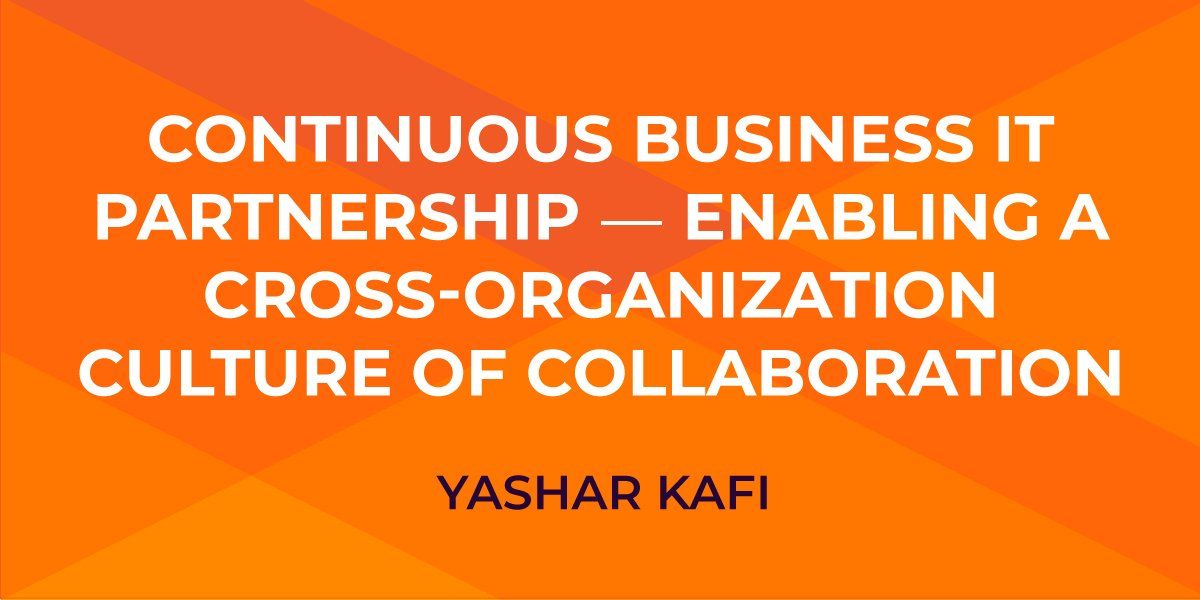Continuous Business IT Partnership ─ Enabling A Cross-Organization Culture of Collaboration
Technology has, for a long time now, been positively influencing the traditional workplace, with tech companies always looking to develop the latest advancements to see just how far they can take tech. On the consumer side, organizations and companies are also always looking to secure the newest generation of tools and gadgets in an effort to keep ahead of the competition. Because of the significant changes of late, you’ll likely find that almost every project at work requires, at least, some level of cross-functional collaboration between say, a generic workplace department, and IT. Technology supports collaboration at work and, if business owners and the C-Suite want to stay competitive, they need to leverage the technological benefits of the modern at, sooner rather than later.
Creating Collaborative Culture
Quite often, when we talk about collaboration in the workplace through tech advancement, people are quick to mistake it with communication. Tools like Slack and similar instant messaging services that organizations load onto their staff-devices are not collaborative tools, but communicative ones. Yes, sure, they’re super handy when you need to contact somebody who’s three flights of stairs away, but they’re just tools that facilitate communication between employees.
As Dion Hinchcliffe excellently defines the difference with the statement that communication is “… a simple exchange of information ” and collaboration is “… the co-creation of shared outcomes that are richer than they would be otherwise because the participants respond to learning and insight during the process itself.”
It isn’t necessarily easy to simply change the culture of your organization ─ especially if it’s an older one, steeped in tradition with norms and values that have spanned across the decades. It’ll take a lot of commitment, from the entire workforce to continuous improvement. There’ll be a lot of ups-and-down, a ridiculous amount of trial-and-error, and maybe even a couple of tears along the way.
Tech Implementation For Collaboration
Once you’ve embarked on your culture-changing journey, your organization should begin to better its technological capabilities. For successful collaboration in the modern age, companies need to make sure that their tech environment is supportive of collaborative needs and demands.
What are the key upgrades needed, and what are the benefits of having a tech-enhanced collaborative environment in the workplace?
Meetings Are Easier
- Through the use of software like Skype for Business, Zoom, and GoToMeeting, your team will be able to host virtual meetings. These meetings will use the audio, video, and screen-sharing capabilities that pretty much all modern laptops, tablets, and other smart devices have. Suddenly, with these simple upgrades and adaptions, you’ll find that employees do not need to be in the same location all at once, which gives them a greater amount of flexibility.
Expedites The Knowledge Exchange
- The knowledge exchange is one of the most important aspects of any organization ─ the culmination of ideas to innovate solutions for a better future. Traditionally, tech brought us email systems, and while that was great back then and still works well today, emails can quickly become a burden unless an office-wide culture that supports reasonable email practices is established.
As an alternative to the sometimes arduous email system, organizations are starting to adopt ‘instant messaging’ services that are targeted towards businesses that need cross-collaboration, like Slack, as a prime example. These new instant messaging apps are excellent for organizations that run projects because you can start group chats with the relevant members of staff to communicate in while keeping in touch with the rest of the workforce where necessary too.
Boardrooms and conference rooms have also been enhanced by tech in recent years, with organizations investing in monitors and projectors, allowing employees to present their thoughts to the rest of the room and capture ideas quickly as meetings progress.
Provides A Databank Of Knowledge
- When teams are collaborating across departments, timezones, and continents, messages can sometimes be misinterpreted ─ such is the nature of being human, right? Well, with that in mind, a lot of people will find themselves researching X, Y, and Z, and forming their own little brainstorming documents and research source collections. The use of services like, for example, Google Drive, will allow all project-related material to be placed in a singular folder that only the relevant people can access. It’s like a databank that’ll exist forever, which can come in handy further down the line when a challenging project relates to something that has already been worked on.
Preparing For The Future
Change is always an inevitability and, with the modern advancement of technological capabilities, you can bet your bottom dollar that it’s going to sweep through an organization near you, soon. The best way for organizations to adapt is to embrace the change and invest fairly heavily in the tools that are already reputable for bettering business processes and enhancing the collaborative ability of the workforce. Organizations need to adopt the mindset that tech is not just a tool but also a partner in business so that the culture within the workplace truly harnesses the capabilities that both software and hardware bring to the table. At AMPlify , we’ve been talking about the tech wave for a while now, and our specialists are always available to give organizations a hand in adapting to and adopting tech in the workplace. Get in touch today.




